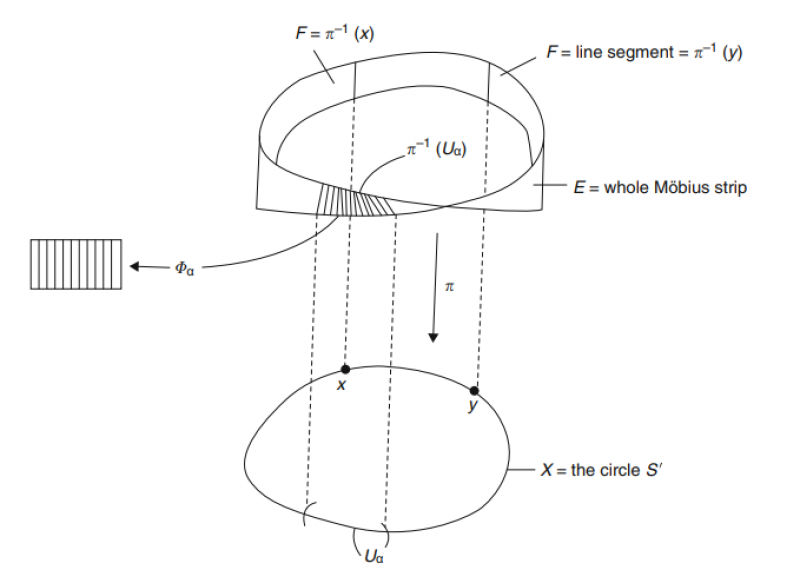The Notes
-
1) I've seen this, while dealing with a real analyis problem. It can be very usefull proving statements.
$$\forall x,y\in[0,\infty),\quad \sqrt{|x-y|}\ge |\sqrt x -\sqrt y|$$
$$\circ--------------------------------\circ$$
2) Again, in real analysis.
$$\forall f\neq0,\quad \left(f+\dfrac1f -2\right)=\left(f-1 \right)\left(1-\dfrac1f \right)$$
$$\circ--------------------------------\circ$$
3)$$\forall x_1,x_2\in[0,\infty),\quad|sin^2x_1-sin^2x_2|\le 2|x_1-x_2|$$
$$\circ--------------------------------\circ$$
4)$$ \text{For } \;\; k \in \{0, \cdots, m\}\;\;\text{ we have}$$
$$ A_k = \lim_{x\to-k} \frac{x+k}{x(x+1)\cdots(x+m)} = \frac{(-1)^k}{k!(m-k)!} = \frac{(-1)^k}{m!}\binom{m}{k}. $$$$\Rightarrow$$$$ \frac{1}{x(x+1)\cdots(x+m)} = \frac{1}{m!} \sum_{k=0}^{m} \binom{m}{k} \frac{(-1)^k}{x+k} $$
$$\circ--------------------------------\circ$$
5)$$\text{Let}\;\;\;\; S_n \;\;\;\; \text{be permutation group and}\;\; A_n \;\;\;\;\text{alternating group which is normal subgroup of}\;\; S_n.$$
$$S_n=A_n\cup (12)A_n\;\;\;\;\text{or}\;\;\;\; S_n=A_n\cup t\circ A_n$$ is true for any transposition t.
$$\circ--------------------------------\circ$$
6) Additional to the 5), $$|A_n|=|(12)A_n|=|t\circ A_n|=n!/2$$
$$\circ--------------------------------\circ$$
7)$$ \text{If one wants to find center of} \;\;\;\; GL_2(\mathbb R), \;\;\;\;\text{the trick that one can use is considering invertible matrix}\;\;\;\; \left[ \begin{matrix} 1 & 1 \\ 0 & 1 \end{matrix}\right] \\ \text{since every element in center should commute with it we can explore the general charastics of center of}\;\;\;\; G \;\;\;\;, Z(G)\\ \text{which is } Z(G)=\left \{\left[ \begin{matrix} a & 0 \\ 0 & a \end{matrix}\right] \big | a\in\mathbb {R^x}\right\}$$
$$\circ--------------------------------\circ$$
8) A way to create isomorphism between complex numbers and certain matrices:
$$ (\star )\left[ \begin{matrix} 0 & -1 \\ 1 & 0 \end{matrix}\right]^2=-\left[ \begin{matrix} 1 & 0 \\ 0 & 1 \end{matrix}\right]\quad \Rightarrow\quad \left[ \begin{matrix} 0 & -1 \\ 1 & 0 \end{matrix}\right]=\sqrt{-\left[ \begin{matrix} 1 & 0 \\ 0 & 1 \end{matrix}\right]}$$
Using $(\star)$ we have following: $$\left[ \begin{matrix} a & -b \\ b & a \end{matrix}\right]=a\left[ \begin{matrix} 1 & 0 \\ 0 & 1 \end{matrix}\right]+b\sqrt{-\left[ \begin{matrix} 1 & 0 \\ 0 & 1 \end{matrix}\right]}\approx a+b\sqrt{-1}=a+bi$$
$$\circ--------------------------------\circ$$
9)A very usefull periodic identity. (i)
$f:\mathbb R\to \mathbb R$ be continuous and periodic with period $T>0$ then:
$$(\forall a\in \mathbb R),\quad\displaystyle\int_a^{a+T}f(x)dx=\displaystyle\int^T_0f(x)dx$$
$$\circ--------------------------------\circ$$
10)A very usefull periodic identity. (ii)
$f:\mathbb R\to \mathbb R$ be continuous and periodic with period $T>0$ then:
$$(\forall a<b \in \mathbb R),\quad\lim_{n\to \infty}\displaystyle\int_a^b f(nx)dx=\dfrac{b-a}{T}\displaystyle\int^T_0f(x)dx$$
$$\circ--------------------------------\circ$$
11) "Every group is isomorphic to a group of permutations." A motivation can be given as following.
Considering the cayley table of a group we obtain a permutation for $g_i,g_j\in G$ that $g_i g_j \in G=\{g_1,g_2,...,g_n,...\}$
$$\circ--------------------------------\circ$$
12) $$\arctan\left(\frac{a_1}{a_2}\right)+\arctan\left(\frac{b_1}{b_2}\right)=\arctan\left(\frac{a_1b_2+
a_2b_1}{a_2b_2-a_1b_1}\right)$$
$$\circ--------------------------------\circ$$
13.i) $$\arctan\tanh(n+1)-\arctan\tanh(n-1) = \arctan\left(\frac{\tanh(n+1)-\tanh(n-1)}{1+\tanh(n-1)\tanh(n+1)}\right)=\\=\arctan\left(\frac{\sinh(2)}{\cosh(2n)}\right)$$
$$\circ--------------------------------\circ$$
13.ii) Like in 13.i we have $$\arctan\left(\frac{\sinh(1)}{\cosh(2n)}\right) = \arctan\tanh\left(n+\frac{1}{2}\right)-\arctan\tanh\left(n-\frac{1}{2}\right)$$
$$\circ--------------------------------\circ$$
14) More generally (from m.s.e.) $$\displaystyle\sum_j \arctan x_j= \arctan \frac{\sum_j x_j - \sum_{j,k,\ell} x_j x_k x_\ell + \sum\text{products of five} - \sum\text{products of seven} + \cdots }{1 - \sum_{j,k} x_j x_k + \sum\text{products of four} - \sum\text{products of six} + \cdots}$$
$$\circ--------------------------------\circ$$
15)
$\forall n\in \mathbb N^+$
$$\left\lfloor\sqrt{n^2+2n}\right\rfloor=n$$
$$$$
Generally if $a,b\in\mathbb R^+$ with $a<b$ then $\lfloor a\rfloor \le \lfloor b\rfloor$
$$$$
Proof:
Assume $a,b\in\mathbb R^+$ with $a < b $ but $ \lfloor a \rfloor> \lfloor b \rfloor $
$$$$
$\lfloor a\rfloor > \lfloor b\rfloor$ implies $ \lfloor a\rfloor \ge \lfloor b\rfloor+1$ and
naturally from $a<b$ we got $ \lfloor a\rfloor \le a < b < \lfloor b\rfloor +1$ and using $ \lfloor a\rfloor \ge \lfloor b\rfloor+1$
$$$$
we got : $$ \lfloor b\rfloor+1 \le \lfloor a\rfloor \le a < b < \lfloor b\rfloor +1$$
but $$\lfloor b\rfloor +1<\lfloor b\rfloor +1$$ is absurd.
$$\circ--------------------------------\circ$$
